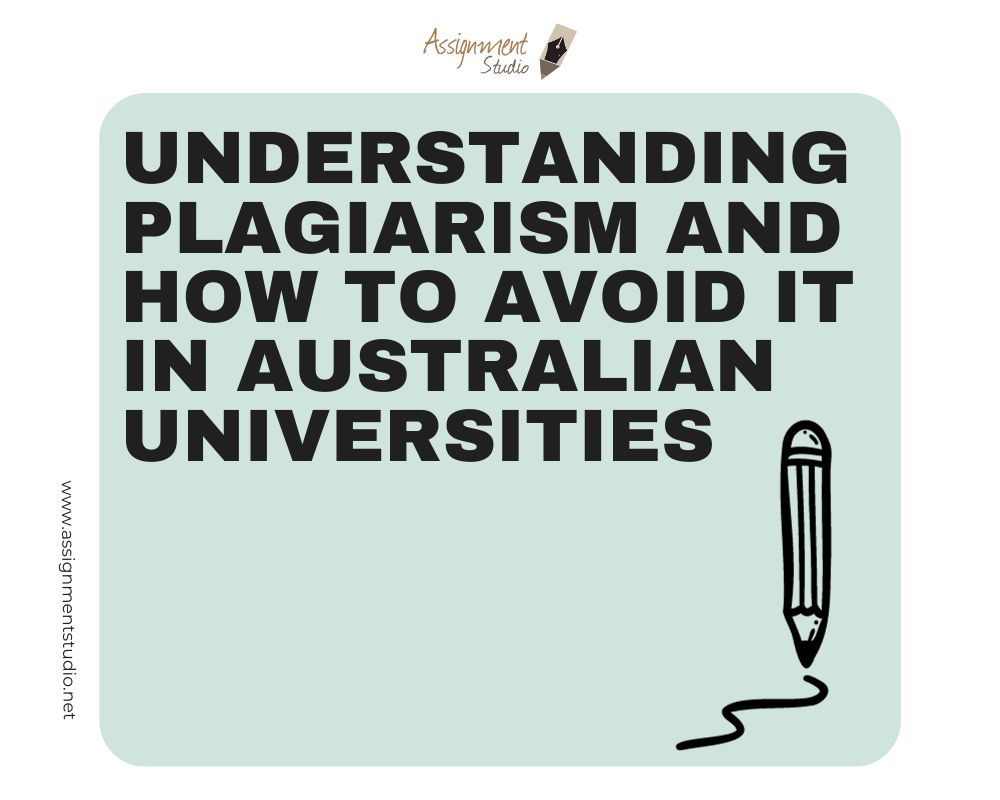
As students in Australian universities, it is essential to understand the concept of plagiarism and how to avoid it. Plagiarism is a serious offense that can lead to severe consequences, including failure in a subject or even expulsion from a course. In this article, we will explore what plagiarism is, the different types of plagiarism, the consequences of plagiarism, and most importantly, how to avoid it. By following the guidelines provided, you can ensure that your work is original, properly referenced, and adheres to academic conventions.
Table of Contents
What is Plagiarism?
Plagiarism refers to the act of presenting someone else’s work, ideas, or research as your own without giving proper credit to the original author or source. It includes not only copying written material but also using ideas, arguments, images, compositions, and organizational structures without acknowledgment. Plagiarism is essentially a form of intellectual theft and is strictly prohibited in academic settings.
The following are considered plagiarism:
- Turning in someone else’s work as your own
- Copying ideas and words from someone without citing them
- Failing to put a quotation in quotation marks
- Giving incorrect information about sources
- Paraphrasing but copying the sentence structure of a source without giving credit
- Copying so many words or ideas from a source that it makes up the majority of your work, whether you give credit or not.
Types of Plagiarism
There are several types of plagiarism that students should be aware of:
- Global Plagiarism: This involves passing off an entire text written by someone else as your own work.
- Verbatim Plagiarism: This occurs when you directly copy someone else’s words without proper citation.
- Paraphrasing Plagiarism: It refers to rephrasing someone else’s ideas and presenting them as your own, without giving credit.
- Patchwork Plagiarism: This involves stitching together parts of different sources to create your own text, without proper attribution.
- Self-Plagiarism: Recycling your own past work without acknowledging that it has been previously submitted.
Consequences of Plagiarism
Understanding the consequences of plagiarism is crucial to prevent its occurrence. Here are some of the potential repercussions if you are found guilty of plagiarism:
- Additional Assessment: You may be required to complete extra assignments or assessments as a result of plagiarism.
- Zero Marks: Plagiarism can lead to receiving zero marks for the plagiarized work.
- Failure: If plagiarism is detected, you may fail the subject or course.
- Termination of Enrolment and Expulsion: In severe cases, plagiarism can result in termination of enrolment and expulsion from the university.
To avoid these consequences, it is essential to understand how to properly acknowledge and cite sources in your academic work.
How to Avoid Plagiarism?
Avoiding plagiarism requires adhering to proper academic conventions and giving credit to original authors. Here are some strategies to help you avoid plagiarism in your writing:
Acknowledging Sources
The simplest and most effective way to prevent plagiarism is to properly acknowledge your sources. Whenever you use information that originated from another source, such as ideas, examples, theories, or opinions, you must cite and reference that source accurately.
Direct Quotations
When using someone else’s exact words, it is important to indicate that you are quoting them. Place the quoted text within quotation marks and provide a proper citation to acknowledge the source.
Paraphrasing Another Person’s Words or Ideas
Paraphrasing involves rewriting another person’s ideas in your own words. It is important to remember that paraphrasing still requires proper citation. Simply changing a few words or the sentence structure is not enough. Ensure that you completely rephrase the original language while retaining the original meaning.
Tables, Figures, Graphs, Diagrams, or Images
Whenever you use information from tables, graphs, figures, diagrams, or images obtained from any source, it is crucial to acknowledge the original source. This applies to both academic texts and images obtained from external sources.
Citing Your Sources Correctly
Every time you quote or paraphrase, you must include an in-text or footnote citation to identify the original author. Each citation should correspond to a full reference in the reference list or bibliography at the end of your paper. Different citation styles, such as APA, MLA, or Chicago, have specific rules for formatting citations. Make sure to follow the prescribed citation style provided by your professor or choose one that is appropriate for your field of study.
Using a Plagiarism Checker
To ensure the originality of your work, you can utilize plagiarism checkers like Turnitin. These tools scan your documents, compare them to a vast database of existing texts, and highlight any similarities or potential instances of plagiarism. Using a plagiarism checker can help you identify unintentional instances of plagiarism and make necessary revisions before submitting your work.
Common Knowledge
You do not need to provide a reference for information that is considered common knowledge. Common knowledge refers to information widely known and shared by many people. However, it can be challenging to determine what falls under common knowledge in your specific field of study. If in doubt, it is always better to provide a reference to demonstrate that you have been reading academic texts and to avoid any potential issues with plagiarism.
Conclusion
Plagiarism is a serious offense that can have significant consequences for students in Australian universities. By understanding what plagiarism is, the different types of plagiarism, and how to avoid it, you can ensure the originality and integrity of your academic work. Remember to properly acknowledge your sources, cite them correctly, and utilize plagiarism checkers when necessary. By following these guidelines, you will uphold academic honesty and maintain the highest standards of integrity in your studies.







